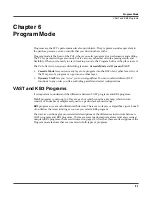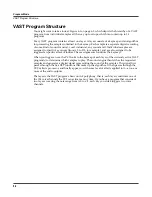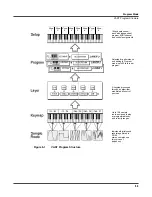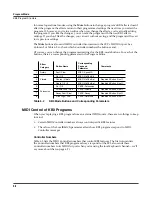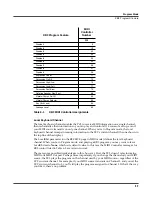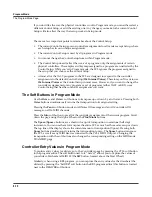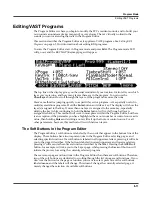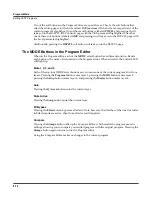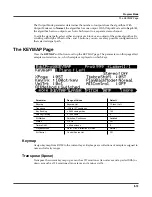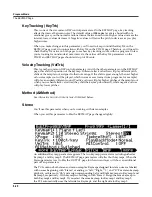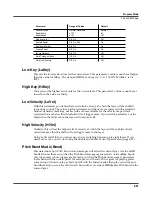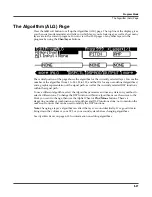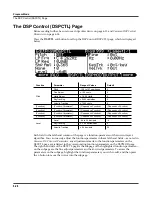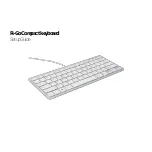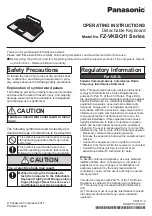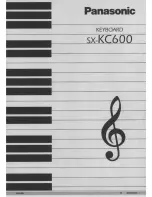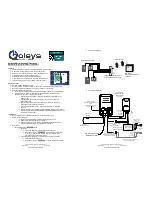
6-14
Program Mode
Algorithm Basics
source in the Controller List to modulate the function-parameter. The above italicized
parameter-types are described in
Common DSP Control Parameters
on page 6-14. More
information on the subpages can be found in
The DSP Control (DSPCTL) Page
on page 6-28 and
The DSP Modulation (DSPMOD) Page
on page 6-29.
Highlighting any of the function-blocks on the ALG page and pressing the
Edit
button takes you
to the DSPCTL page.
Common DSP Control Parameters
The type of DSP function available for any function block depends on the algorithm. Some of
the specialized functions like the PANNER are always located just before the final AMP
function. Others, like the three-input functions, appear only in algorithms that are structured for
three-input functions.
You can change the nature of each layer of a program simply by assigning different DSP
functions to the layer’s algorithm. Your level of control goes much deeper than that, however.
Each DSP function has one or more parameters to which you can patch a variety of control
sources to modify the behavior of the DSP functions themselves.
The parameters on the various control-input pages are very similar; in fact, there are six
parameters that appear on almost every page. Consequently we refer to them as the common
DSP control parameters. Although the parameters on the control-input pages differ slightly
from function to function, you can expect to see some or all of the common DSP control
parameters whenever you select the control-input page for any of the DSP functions.
You’ll recognize the common DSP control parameters, along with several other parameters.
Keep in mind that there’s a set of common control parameters for each of the DSP functions; in
this case we’re describing them only as they apply to the pitch control function.
Function-parameter
Unlike the other five common DSP parameters, the function-parameters are accessible on both
the DSPCTL page and the DSPMOD page. They are listed along the left-hand side of each page;
any changes made to them on one page are reflected in the other. The label of each function-
parameter depends on its function in the current program’s algorithm. For example, the Pitch
function’s function-parameter is labeled
Pitch
; whereas the two-block Lopass function’s
function-parameters are labeled
LP Frq
and
LP Res
.
Summary of Contents for PC3
Page 24: ...1 6 Introduction Options ...
Page 50: ...4 4 The Operating Modes Using the Modes ...
Page 174: ...7 54 Setup Mode The Utility Soft Buttons ...
Page 178: ...8 4 Quick Access Mode Making Your Own QA Banks ...
Page 204: ...9 26 Effects Mono Algorithms ...
Page 266: ...A 2 MIDI Implementation Chart ...
Page 308: ...Index x ...


